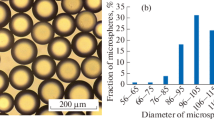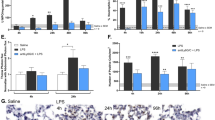Abstract
Comparison of the physiologic responses in rabbits to the intravenous infusion of two polymorphonuclear neutrophil (PMN) activators,N-formyl-methionyl-leucyl-phenylalanine (FMLP) and phorbol myristate acetate (PMA), has revealed marked differences in kinetics for activation between these agents. FMLP infusion was associated with maximally increased respiratory rates (RR), a maximally decreased mean blood pressure (MBP), and a maximally decreased absolute granulocyte count (AGC), all within the first 5 min after infusion. However, there were no significant differences between RR, MBP, and AGC of FMLP-treated animals and controls, 15 min postinfusion and after. On the other hand, PMA did not cause significant changes in RR or MBP until 30 min and 2 h postinfusion, respectively. Previous work has demonstrated that both FMLP and PMA stimulate the PMN metabolically in vitro via the same respiratory burst enzyme, NADPH oxidase, but that each of these activators demonstrates kinetics which are different from the other. Thus, these data from an in vivo study support previous in vitro findings and offer further evidence that the neutropenia and cardiopulmonary alterations following intravenous infusion of FMLP and PMA may be caused by metabolic activation of the blood PMN.
Similar content being viewed by others
References
Staub, N. C., E. L. Schultz, andK. H. Albertine. 1982. Leukocytes and pulmonary microvascular injury.Ann. N.Y. Acad. Sci. 384:332–342.
Bareis, D. L., F. Hirata, H. Fusio, E. Shiffmann, andJ. Axelrod. 1982. Phospholipid metabolism and calcium ion flux in the receptor mediated induction of chemotaxis in rabbit neutropenia.J. Cell. Biol. 93:690–697.
Craddock P. R., D. E. Hammerschmidt, C. F. Moldow, O. Yamada, andH. S. Jacob. 1979. Granulocyte aggregation as a manifestation of membrane interaction with complement: Possible role in leukocyte margination, microvascular occlusion and endothelial damage.Semin. Hematol. 16:140–147.
Lash, J. A., T. D. Coates, J. Lafuze, R. L. Baehner, andL. A. Boxer. 1983. Plasma lactoferrin reflects granulocyte activation in vivo.Blood 61:885–888.
O'Flaherty, J. T., andP. A. Ward. 1979. Chemotactic factors and the neutrophil.Semin. Hematol. 16, 163–174.
Stossel, T. P. 1977. Biology of the polymorphonuclear leukocyte.In A Review of Malnutrition and the Immune Response. R. M. Suskine, editor. Raven Press, New York. 209–213.
Horvath, C., andM. Sovak 1973. Membrane coarctation by calcium as a regulator for bound enzymes.Biochim. Biophys. Acta 298:850–853.
Jacobs, H. S. 1980. Complement-induced vascular leukocytosis: Its role in tissue injury.Arch. Pathol. Lab. Med. 104:617–620.
Johnston, R. B., Jr., andJ. E. Lehmeyer. 1976. Elaboration of toxic oxygen by-products by neutrophils in a model of immune complex disease.J. Clin. Invest. 57:836–841.
Lafuze, J. E., S. J. Weisman, L. A. Alpert, andR. L. Baehner. 1984. Vitamin E attenuates the effects of FMLP on rabbit circulating granulocytes.Pediatr. Res. 18:536–540.
McPhail, L. C., P. M. Henson, andP. B. Johnston, Jr. 1981. Respiratory burst enzyme in human neutrophils: Evidence for multiple mechanisms of activation.J. Clin. Invest. 67:710–716.
Sacks, T., C. F. Moldow, P. R. Craddock, T. K. Bowers, andH. S. Jacobs. 1978. Oxygen radicals mediate endothelial cell damage by complement-stimulated granulocytes: An in vitro model of immune vascular damage.J. Clin. Invest. 61:1161–1167.
Schiffmann, E., H. V. Showell, B. A. Corcoran, P. A. Ward, E. Smith, andE. L. Becker. 1975. The isolation and partial characterization of neutrophil chemotactic factors fromEscherichia coli.J. Immunol. 114:1831–1837.
Williams, L. T., R. Snyderman, M. C. Pike, andR. J. Lefkowitz. 1977. Specific receptor sites for chemotactic peptides on human polymorphonuclear leukocytes.Proc. Natl. Acad. Sci. U.S.A. 74:1204–1208.
Cohen, H. J., M. E. Chovaniec, M. K. Wilson, andP. E. Newberger. 1982. Con-A-stimulated superoxide production by granulocytes: Reversible activation of NADPH oxidase.Blood 60:1188–1194.
Cohen, H. J., J. C. Whitin, M. E. Chovaniec, E. H. Tape, andE. R. Simons. 1984. Is activation of the granulocyte by concanavalin-A a reversible process?Blood 63:114–120.
Fletcher, M. P., andJ. I. Gallin. 1981. Degranulating stimuli increase the availability of the receptors on human neutrophils for the chemoattractant f-Met-Leu-Phe.J. Immunol. 124:1585–1588.
Gallin, J. I., D. G. Wright, andE. Schiffmann. 1978. Role of secretory events in modulating human neutrophil chemotaxis.J. Clin. Invest. 62:1364–1374.
Gallin, J. I., M. P. Fletcher, B. E. Seligmann, S. Hoffstein, K. Cehrs, andN. Mou-Nessa. 1982. Human neutrophil-specific granule deficiency: A model to assess the role of neutrophil-specific granules in the evolution of the inflammatory response.Blood 59:1317–1329.
McPhail, L. C., andR. Snyderman. 1983. Activation of the respiratory burst enzyme in human polymophonuclear leukocytes by chemoattractants and other soluble stimuli.J. Clin. Invest. 72:192–200.
Newberger, P. E., M. E. Chovaniec, andH. J. Cohen. 1980. Activity and activation of the granulocyte superoxide-generating system.Blood 55:85–92.
Shasby, D. M., K. M. Vanbenthuysen, R. M. Tate, S. S. Shasby, I. McMurtry, andJ. E. Repine. 1982. Granulocytes mediate acute edematous lung injury in isolated rabbit lungs perfused with phorbol myristate acetate: Role of oxygen radicals.Am. Rev. Respir. Dis. 125:443–447.
O'Flaherty, J. T., L. R. DeChatelet, C. E. McCall, andD. A. Bass. 1980. Neutrophil aggregation: Evidence for a different mechanism of action by phorbol myristate acetate (40962).Proc. Soc. Exp. Biol. Med. 165:225–232.
Author information
Authors and Affiliations
Rights and permissions
About this article
Cite this article
Lafuze, J.E., Baker, M.D., Oakes, A.L. et al. Comparison of in vivo effects of intravenous infusion ofN-formyl-methionyl-leucyl-phenylalanine and phorbol myristate acetate in rabbits. Inflammation 11, 481–488 (1987). https://doi.org/10.1007/BF00915990
Issue date:
DOI: https://doi.org/10.1007/BF00915990




